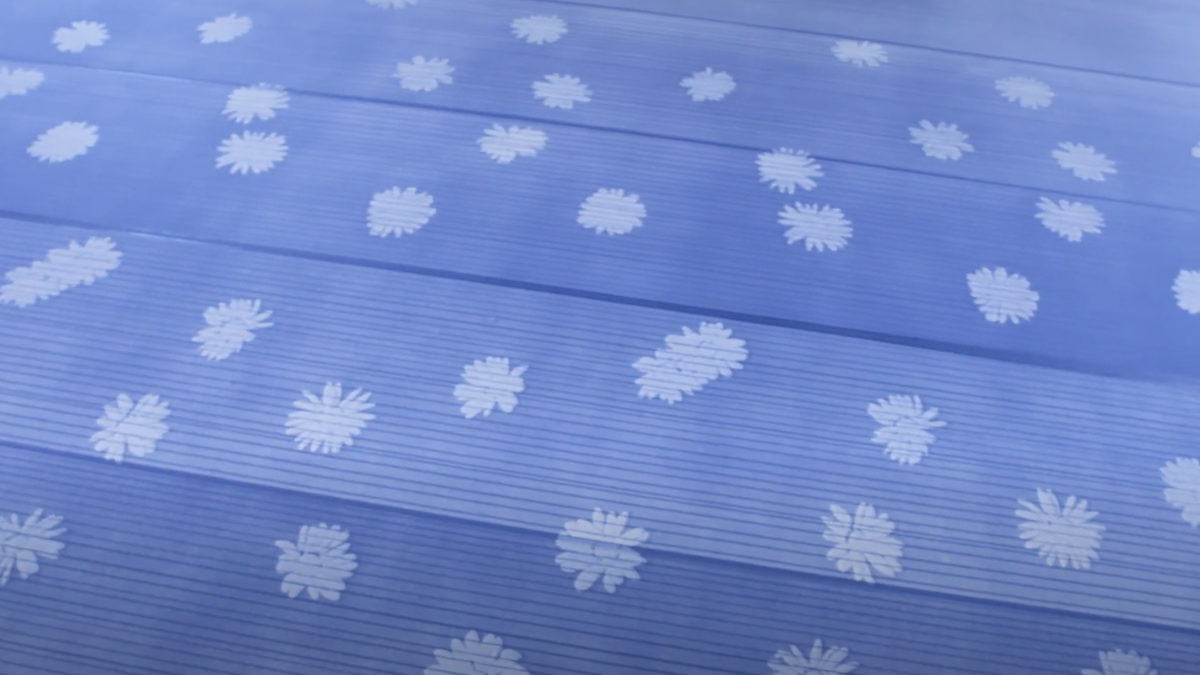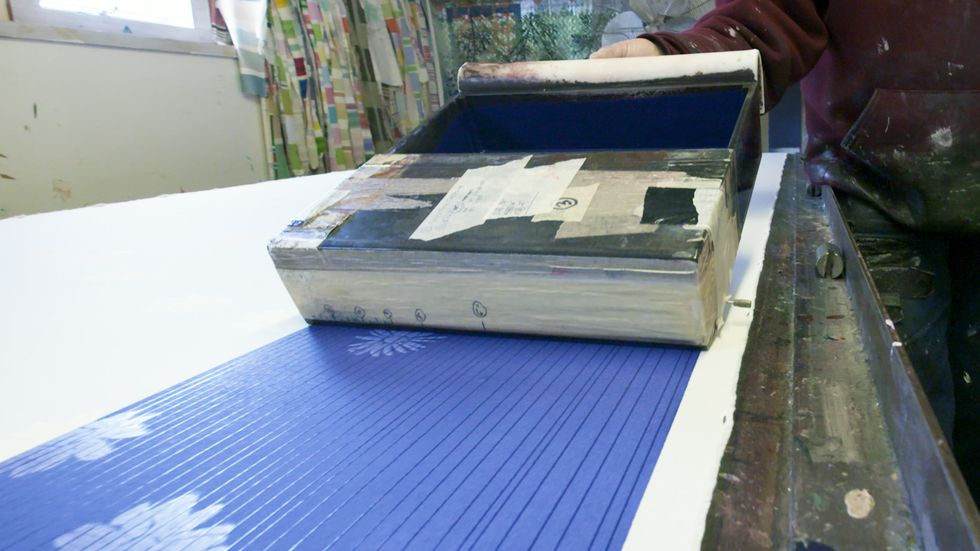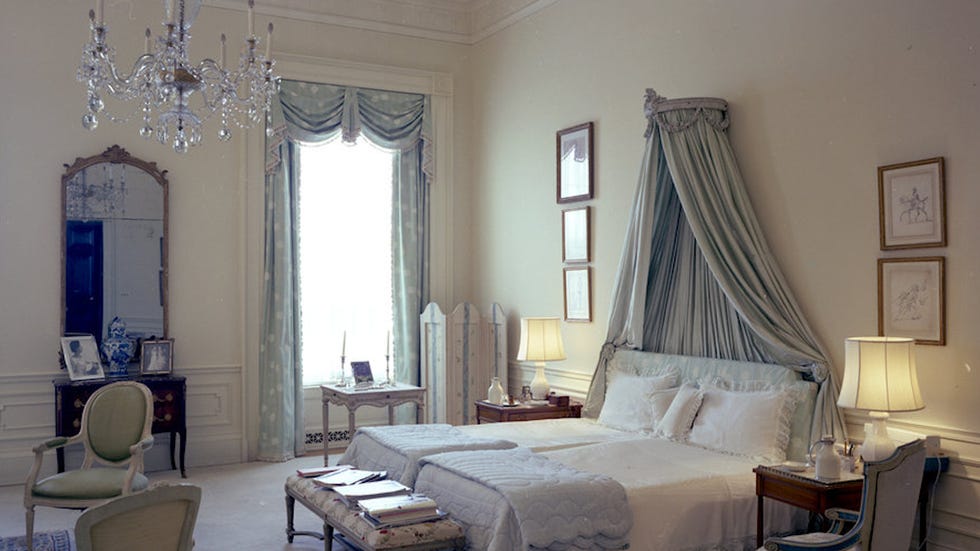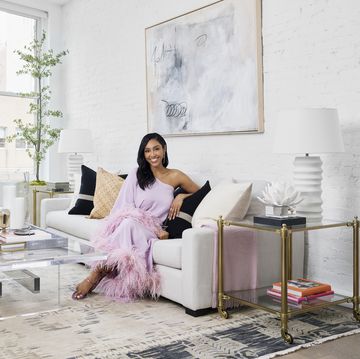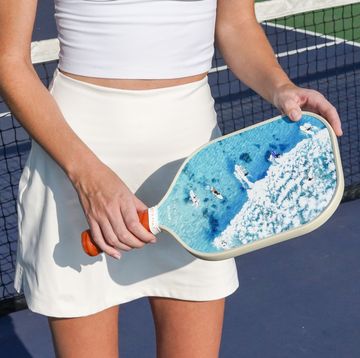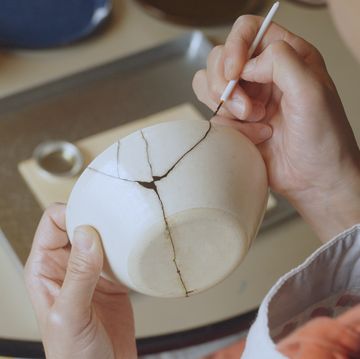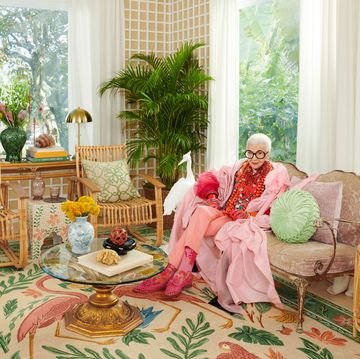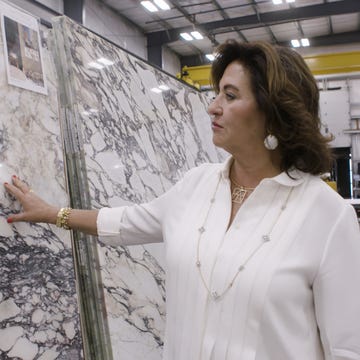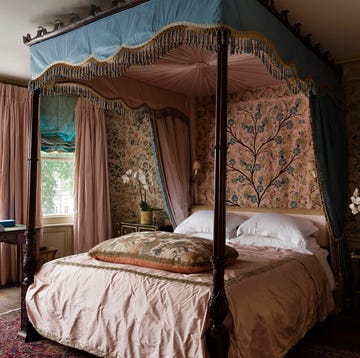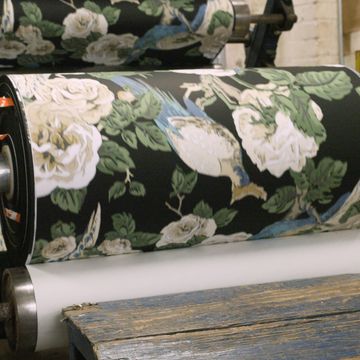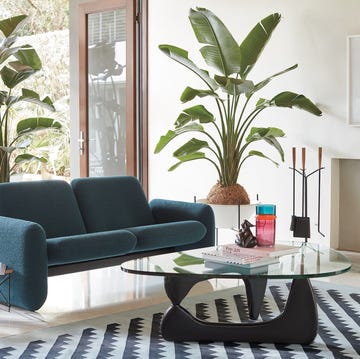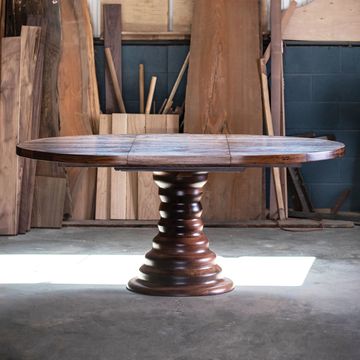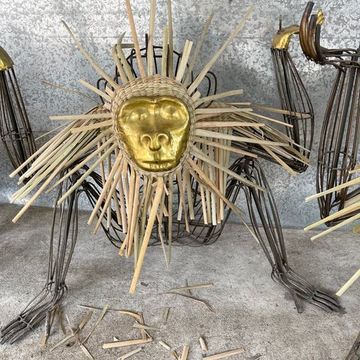In 1944, a young artist went on assignment to Cuernavaca, Mexico, to report a story on the town's textiles for Harper's Bazaar. The story never got filed, but one of the most iconic American textile companies was born.
Upon her arrival in Mexico, the artist, D. D. Doctorow, promptly fell in love with textile printer Leslie Tillett, cancelled her return trip, and joined him in an artist community that included Diego Rivera. After two years of experimenting with dye and screening techniques, the couple moved to New York, where they established Tillett Textiles and became a favorite source of printed clothing for society fixtures like Brooke Astor, Babe Paley, and Loulou de la Falaise. The company's big break, though, would come a few years later, when their floral patterns caught the eye of one very iconic tastemaker: Jackie Kennedy.
When Kennedy tapped Sister Parish to outfit the private rooms of the White House in 1960, the designer worked with Tillett to produce a light blue floral and stripe pattern for the master bedroom—a print that would be named "Jackie's Daisy" for its famous patron. Fast forward some 60 years later, and the pattern is still being produced by the same family on the same screens at the Tillet factory in Sheffield, Massachussetts.
Here, in a sprawling, barn-style building, Patrick McBride (D.D. and Leslie's grandson) carries on his family's tradition—both literally and figuratively. He oversees production of both Tillett's own textiles, as well as the select lines they produce for other designers. He also maintains the company's vast archive—an expansive range of screens housed in an attic McBride calls "my happy place."
For Tillett, the archive is essential: "Nothing at Tillett goes out of production," McBride explains, so having immediate access to the brand's past work makes it easy to instantly recreate a print from a historic interior. That was the case in 2016, when the producers of the movie Jackie approached McBride about printing Jackie's Daisy for the film set White House. A trip up to the attic led McBride to the original screens, and he replicated the Kennedy's fabric to a T. "And I actually flew them to Paris, where the movie was being filmed, myself," McBride recalls.
Tillett might owe some of its recognition to the Kennedy connection (the family also had the brand's Chrysanthemum pattern in their home in Hyannis Port), but its continued success is the result of a dedication to craft and a deft ability to reimagine the classics. All of the brand's patterns are printed by hand, in a process that often requires two people, working in a kind of rhythmic dance to push the paint evenly across the screen and onto the fabric below. "You get into a kind of meditative state when you're printing," says McBride.
The company is also adept at reimagining classics, and their vast archive allows for continual reinvention. "Sometimes I'll pull out an old screen and think, 'that one could use a little change,'" says McBride, who will retool scale or color—Tillett mixes theirs by eye on-site—to riff on past designs.
In the studio, he's often joined by his mother, Kathleen Tillett, who lives adjacent to the factory and has dedicated her life to screen-printing, much like D.D. Doctorow. "I'm the happiest when I'm in here, printing," she says.
